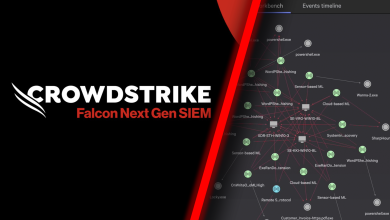Microsoft, Google Lead Q1 2024 Phishing Surge: Check Point Report

Check Point Research (CPR), the Threat Intelligence arm of Check Point® Software Technologies Ltd. (NASDAQ: CHKP) and a leading AI-powered, cloud-delivered cyber security platform provider, has released its latest Brand Phishing Ranking for Q1 2024. The ranking highlights the brands most frequently imitated by cybercriminals in their attempts to deceive individuals and steal personal information or payment credentials.
In the first quarter of 2024, Microsoft continued to be the most imitated brand in phishing attacks, accounting for a staggering 38% of all brand phishing attempts. Google made a modest advance to the second spot, capturing 11% of attempted brand phishing attacks, up slightly from its previous third-place position. Similarly, LinkedIn also saw a rise to third place, with 11% of such attempts, marking a notable increase from the previous quarter. Furthermore, Airbnb made a significant advancement to the 10th position, marking its entry into the top brands list for the first time. This impressive climb is likely influenced by the Easter season, a period associated with increased travel and holiday bookings. The seasonal surge in vacation planning could have amplified Airbnb’s visibility and appeal, particularly among travellers seeking unique accommodations.
The Technology sector remained unchanged as the most impersonated industry in brand phishing, followed by Social Networks and Banking. The technology brands lead in phishing attacks, likely due to their widespread usage in corporate and remote work environments, making them a lucrative entry point into company assets. In many cases, they are used with the employee’s internal credentials, and their exposure poses an even larger risk than the disclosure of an individual’s personal details used in social media, shipping or banking platforms.
Omer Dembinsky, Data Group Manager at Check Point Software, emphasised the persistent threat of phishing attacks, stating, “In light of the persistent threat posed by brand impersonation, it is imperative for users to maintain a heightened level of vigilance and exercise caution when engaging with emails or messages purportedly from trusted brands. By remaining vigilant and adopting proactive cybersecurity practices, individuals can mitigate the risk of falling victim to cybercriminal tactics.”
Top Phishing Brands for Q1 2024:
-
Microsoft (38%)
-
Google (11%)
-
LinkedIn (11%)
-
Apple (5%)
-
DHL (5%)
-
Amazon (3%)
-
Facebook (2%)
-
Roblox (2%)
-
Wells Fargo (2%)
-
Airbnb (1%)
DHL Phishing Email – Shipping Information Scam
In the first quarter of 2024, we observed a phishing campaign involving a deceptive email, purportedly from DHL EXPRESS, claiming to provide critical updates regarding DHL shipments. Sent from the address message-system-express@shipping.com, the email urged recipients to take immediate action, featuring a subject line indicating the importance of the contained information: “Important: Latest Information Regarding DHL Shipments.”
The phishing link embedded in the email directed recipients to a fraudulent website: nangrong.ac.th/shiping. This website, claiming to be a legitimate DHL service, presents itself under the title “Package Protection Centre.” It displays a simulated shipping process for a package supposedly in “Pending” status and asks for a small payment to resume delivery (figure).
.jpg)
4.1
Microsoft Phishing Campaign – Deceptive Email Notifications
This phishing campaign utilises a variety of false email subjects and sender identities to deceive recipients. The deceptive emails include subjects such as “Message Failure Delivery Notice”, “Outlook Info Replacement”, “Annual Leave Compliance Report for 2024” and “Please Complete: Invoice from DocuSign Electronic Signature Service.”
The phishing website (b542df20-c26b-4c27-8ab9-9584ed34b2f4-00-16s5vbpwefi3f.riker.replit.dev) resembles a typical Outlook login page, aiming to trick users into providing their credentials (see figure). This campaign is intended to deceive recipients into revealing sensitive information, posing a significant security threat for organisations.
.png)
4.2




